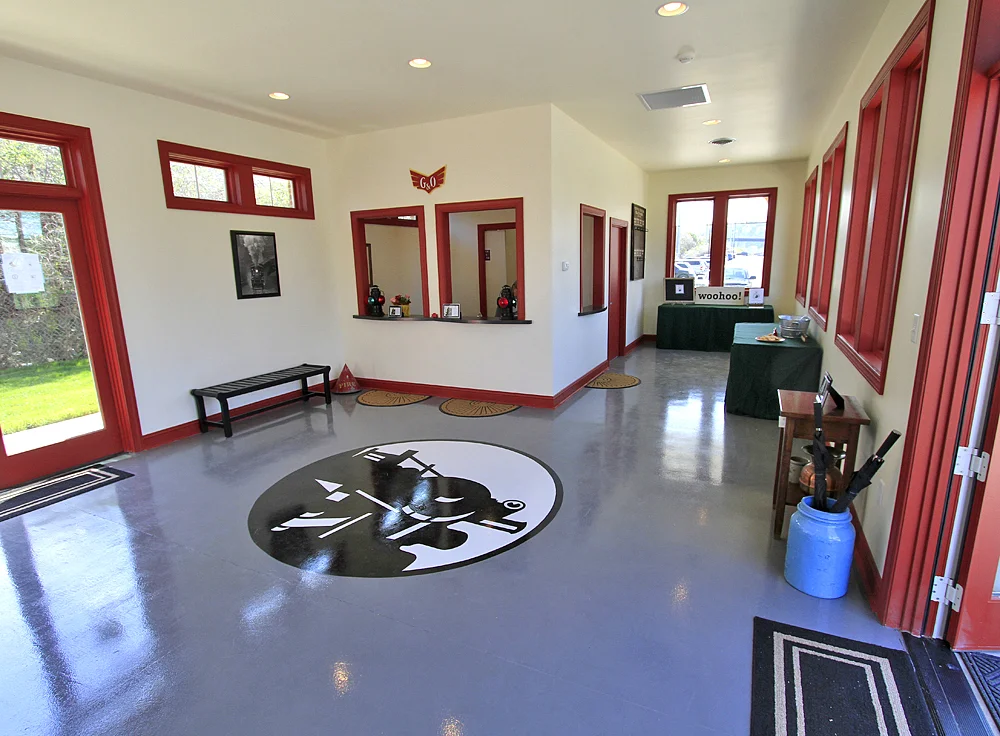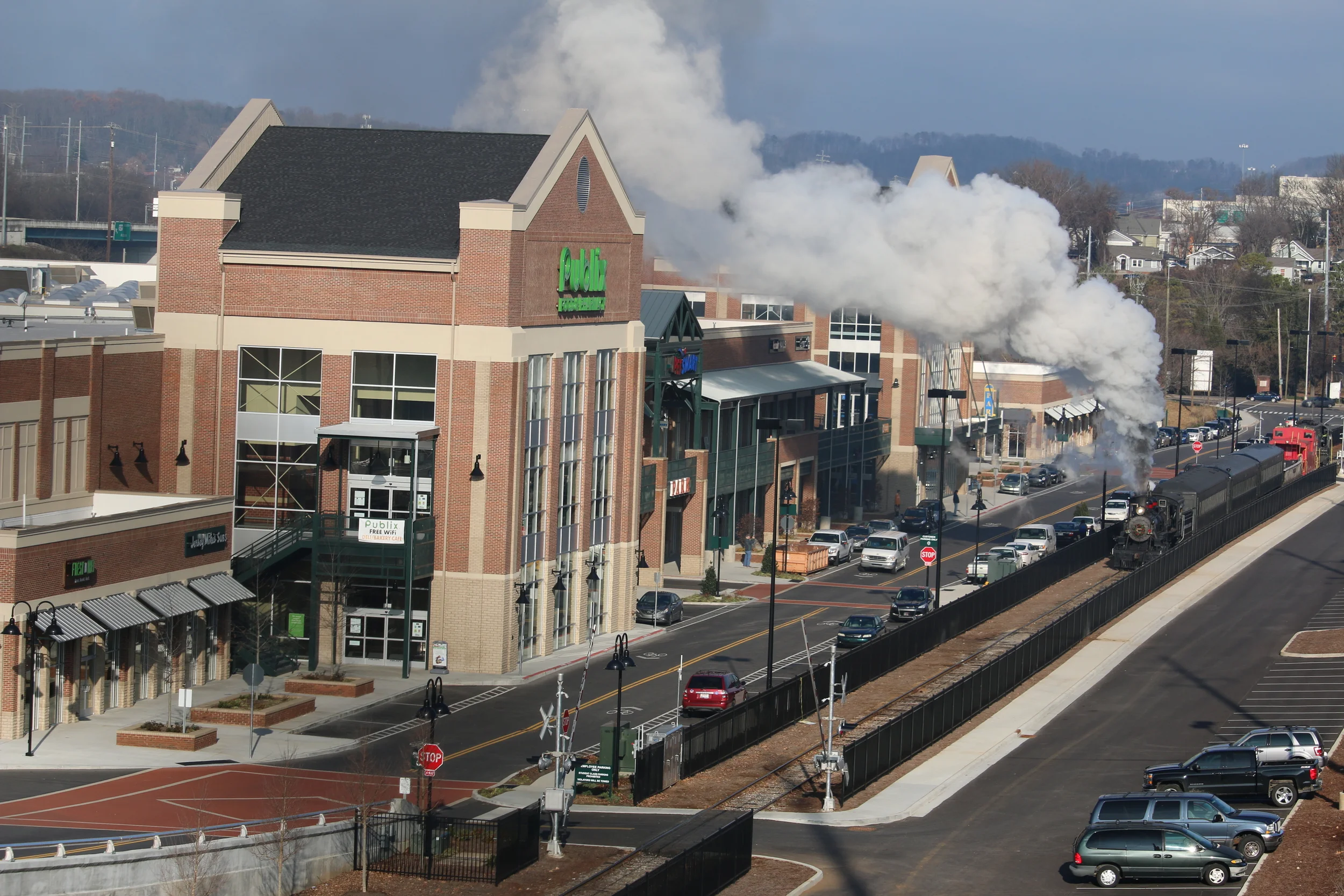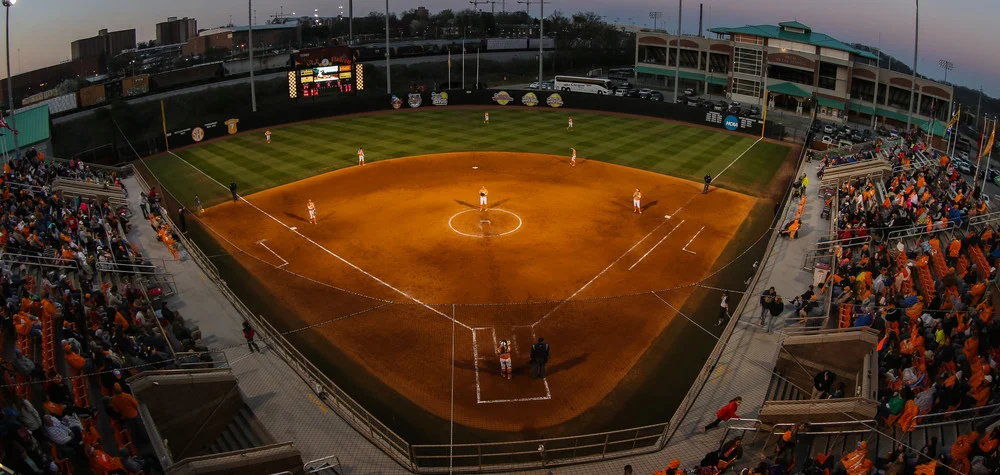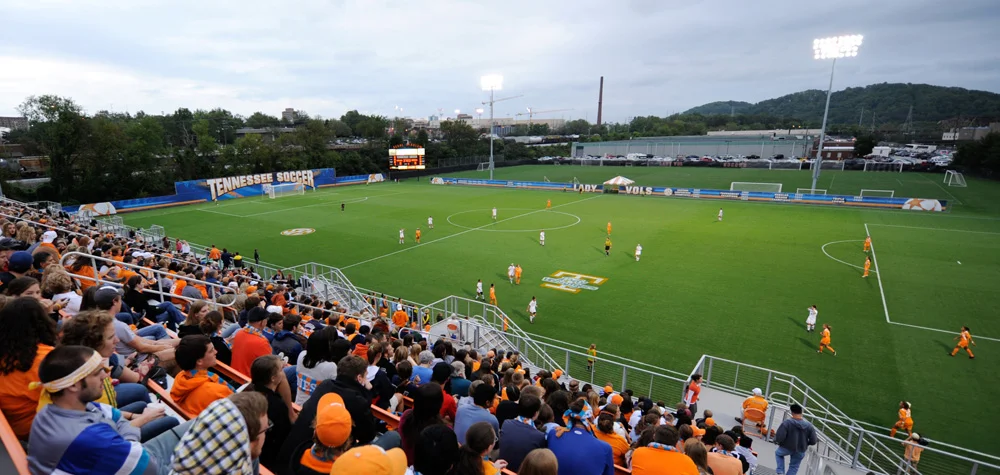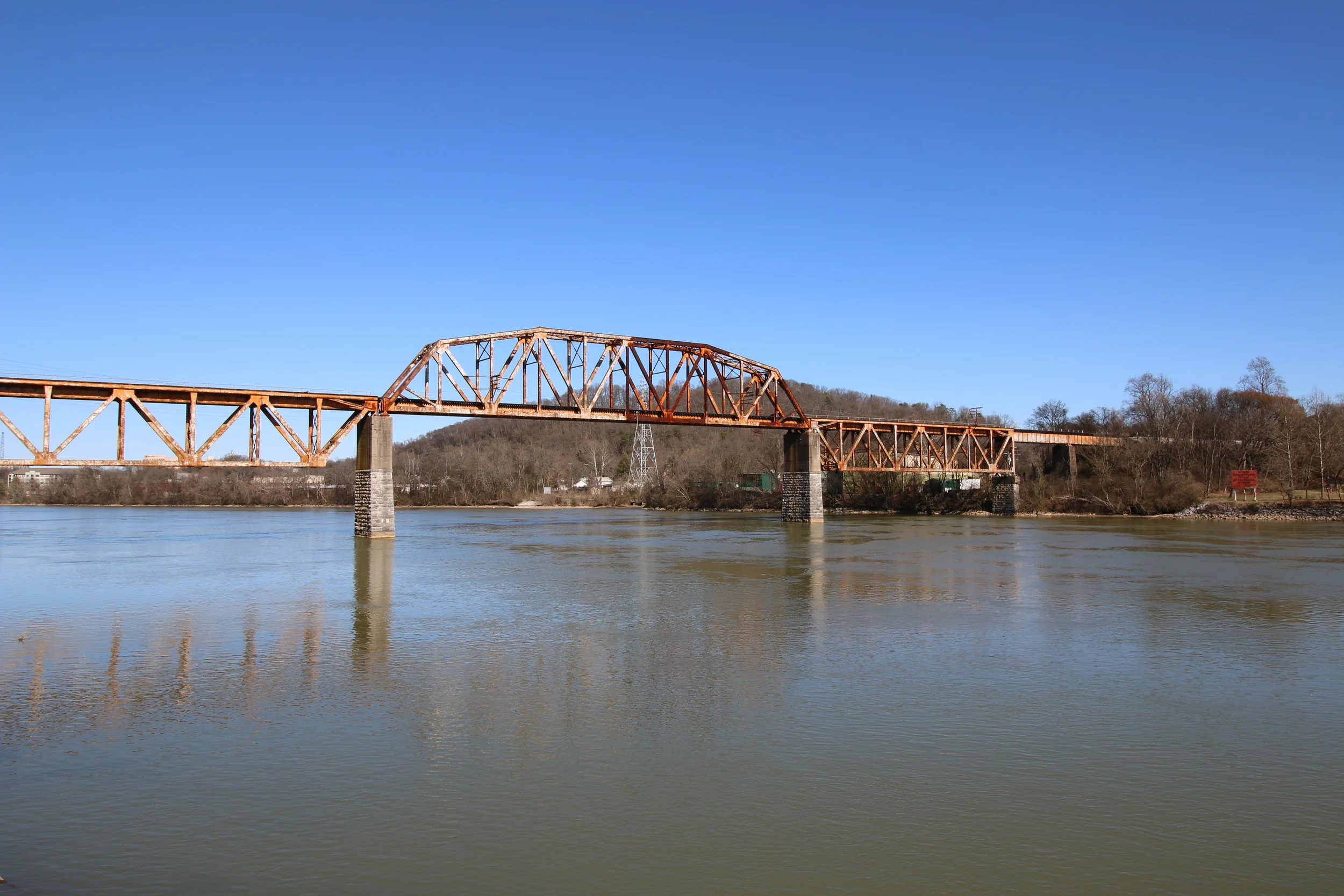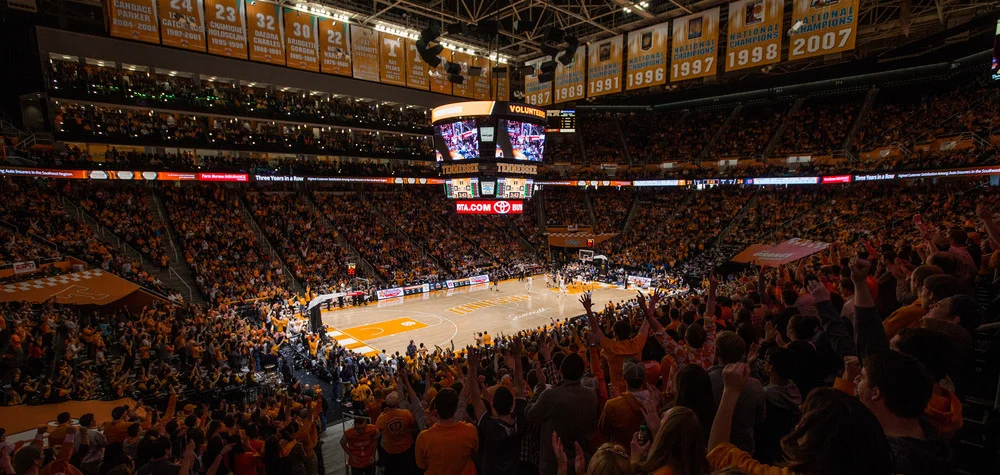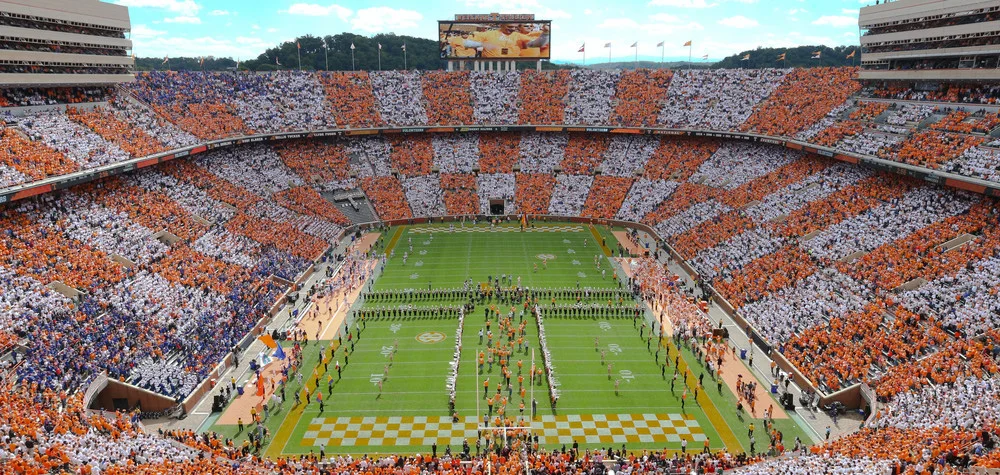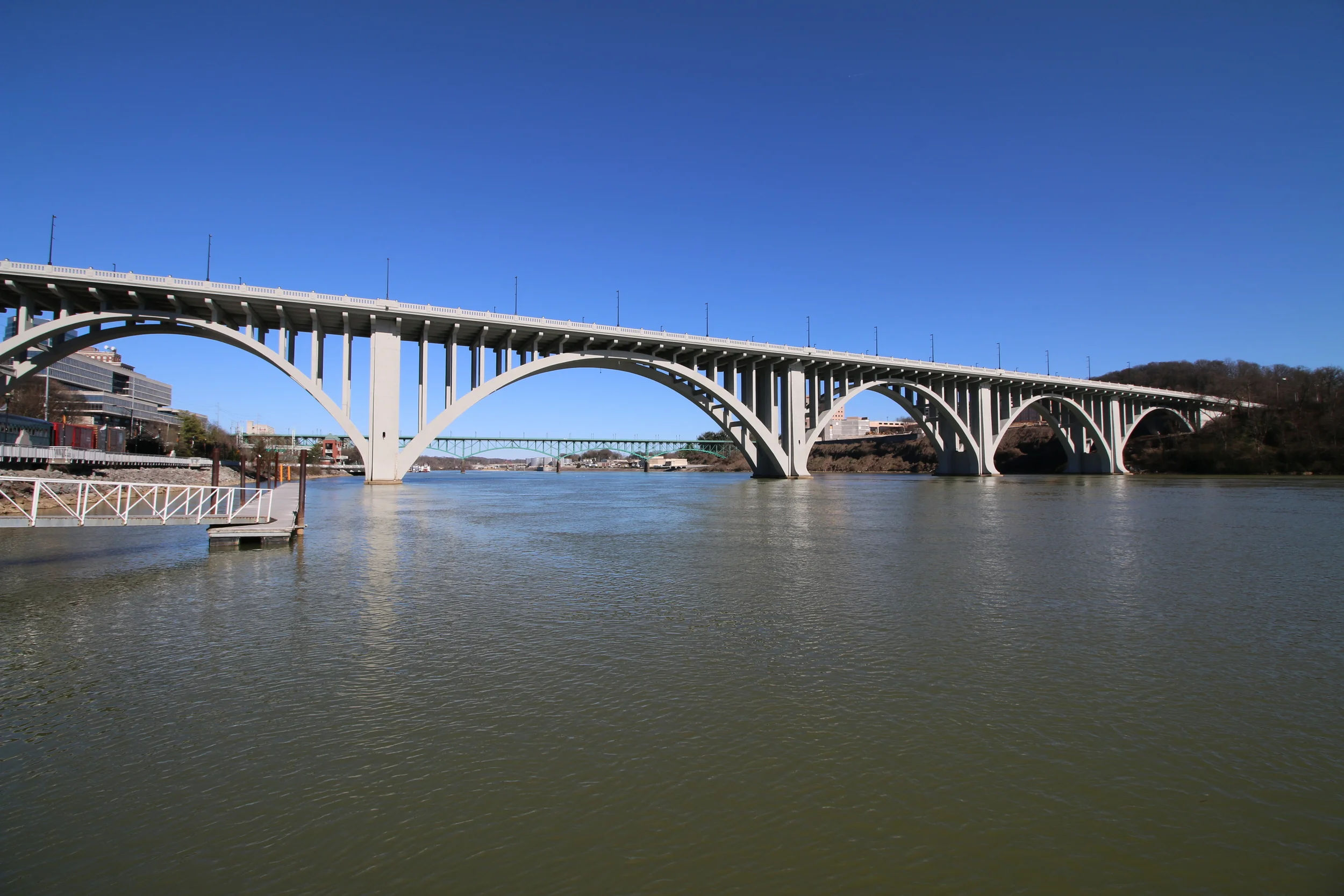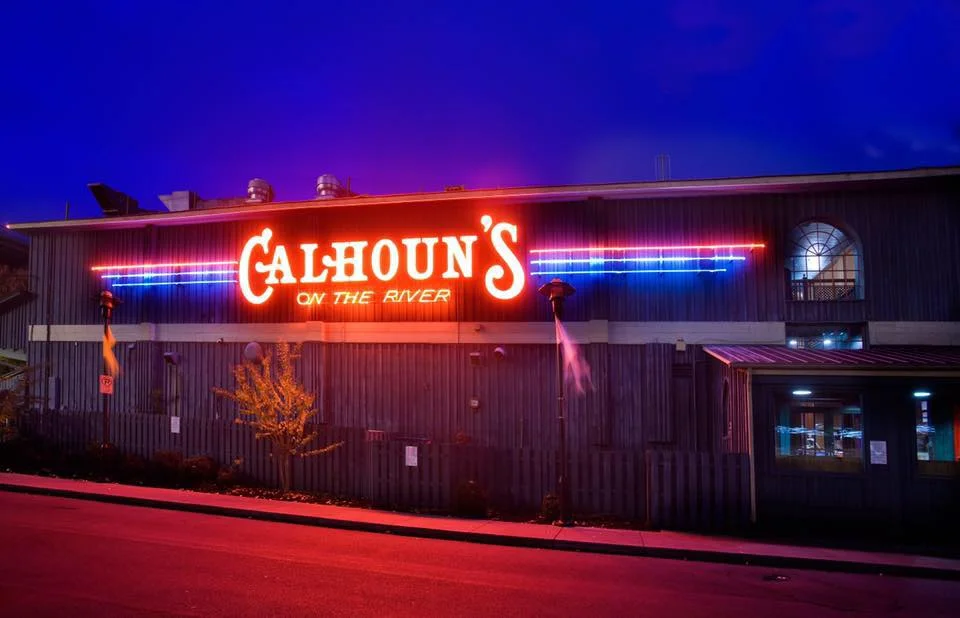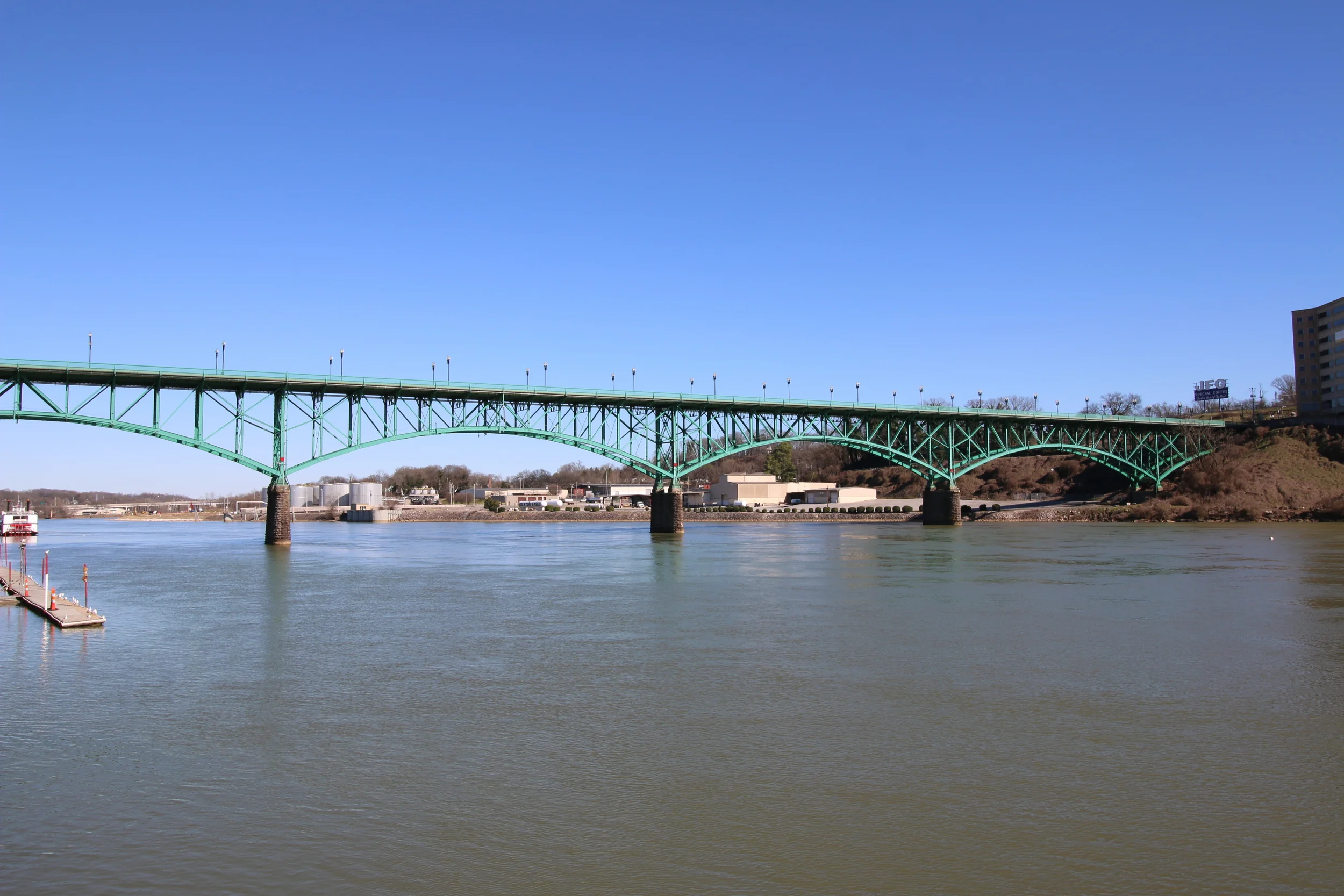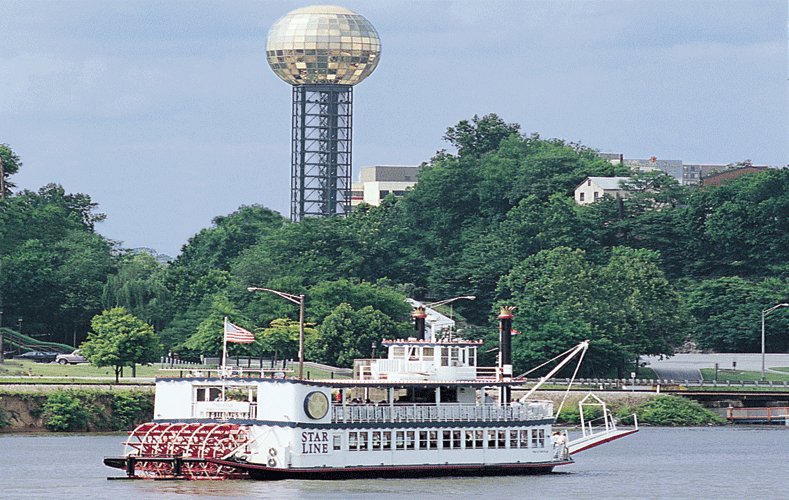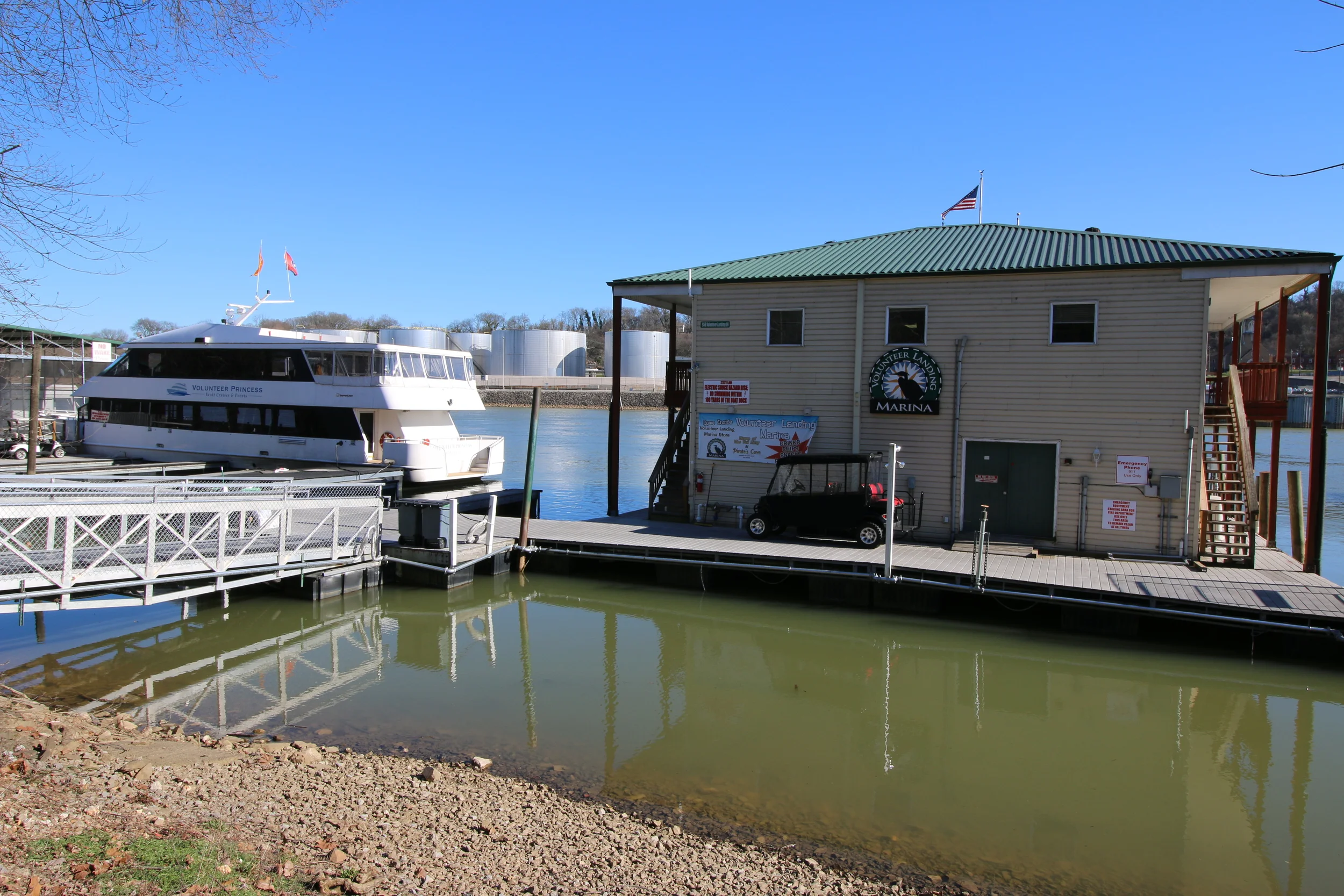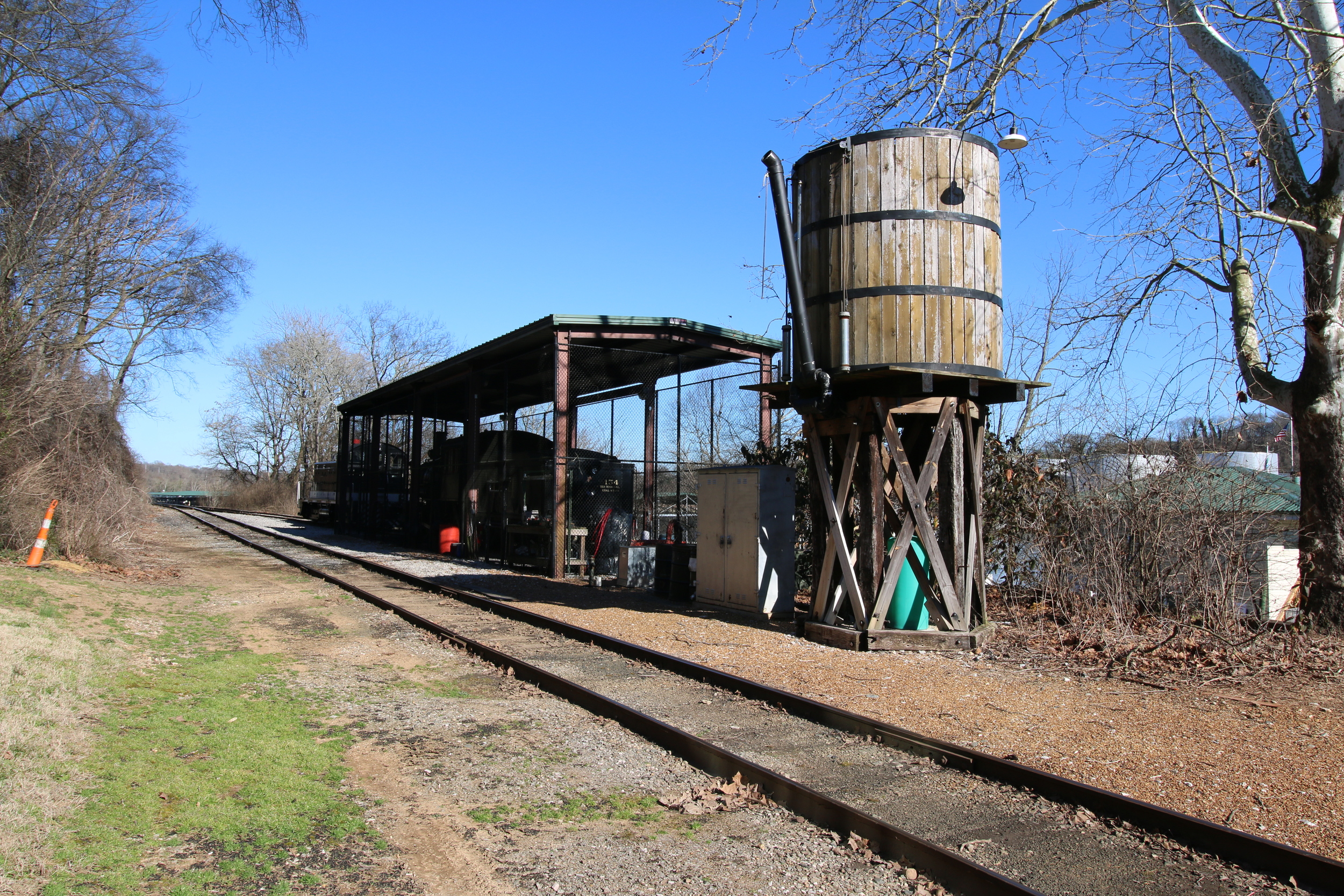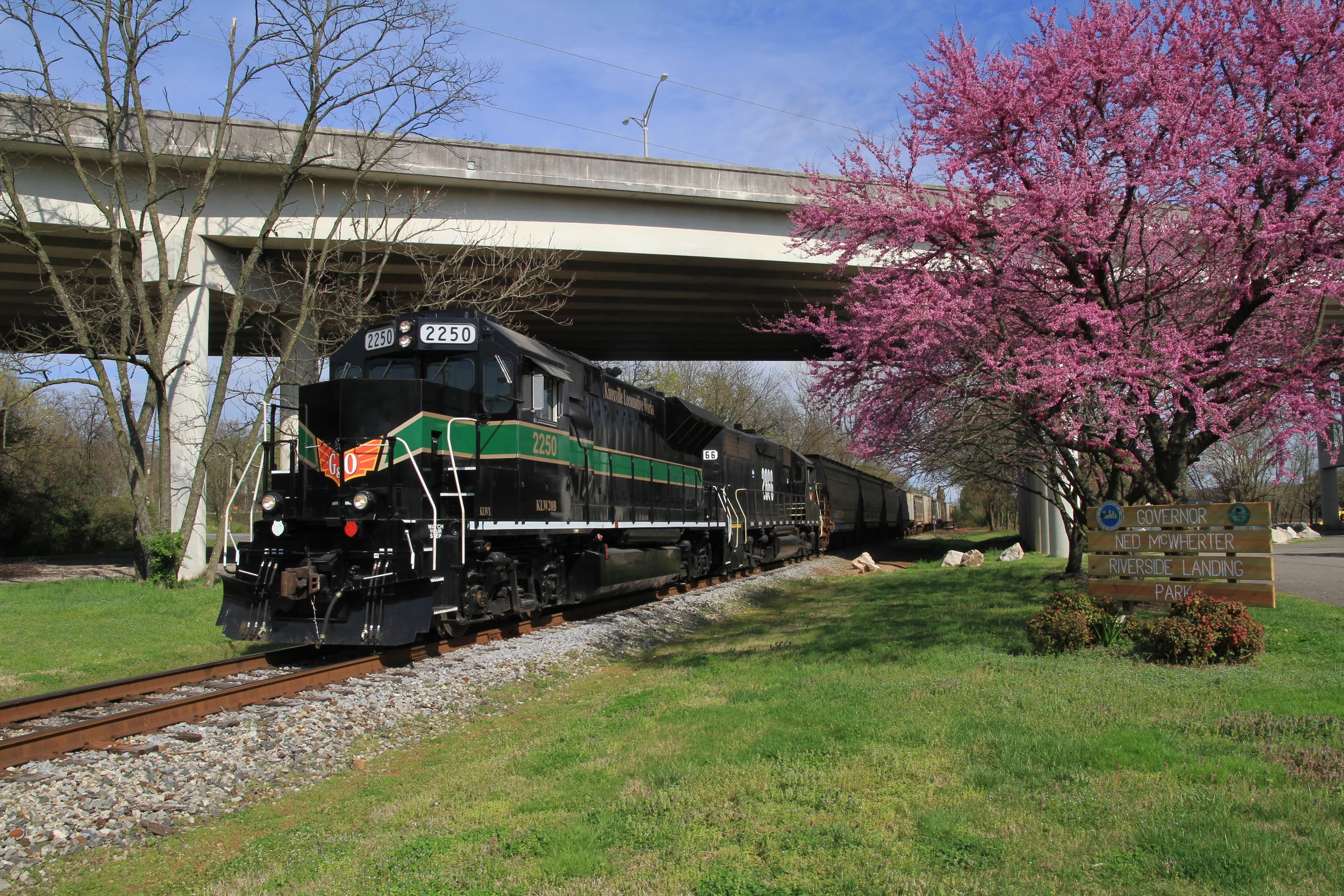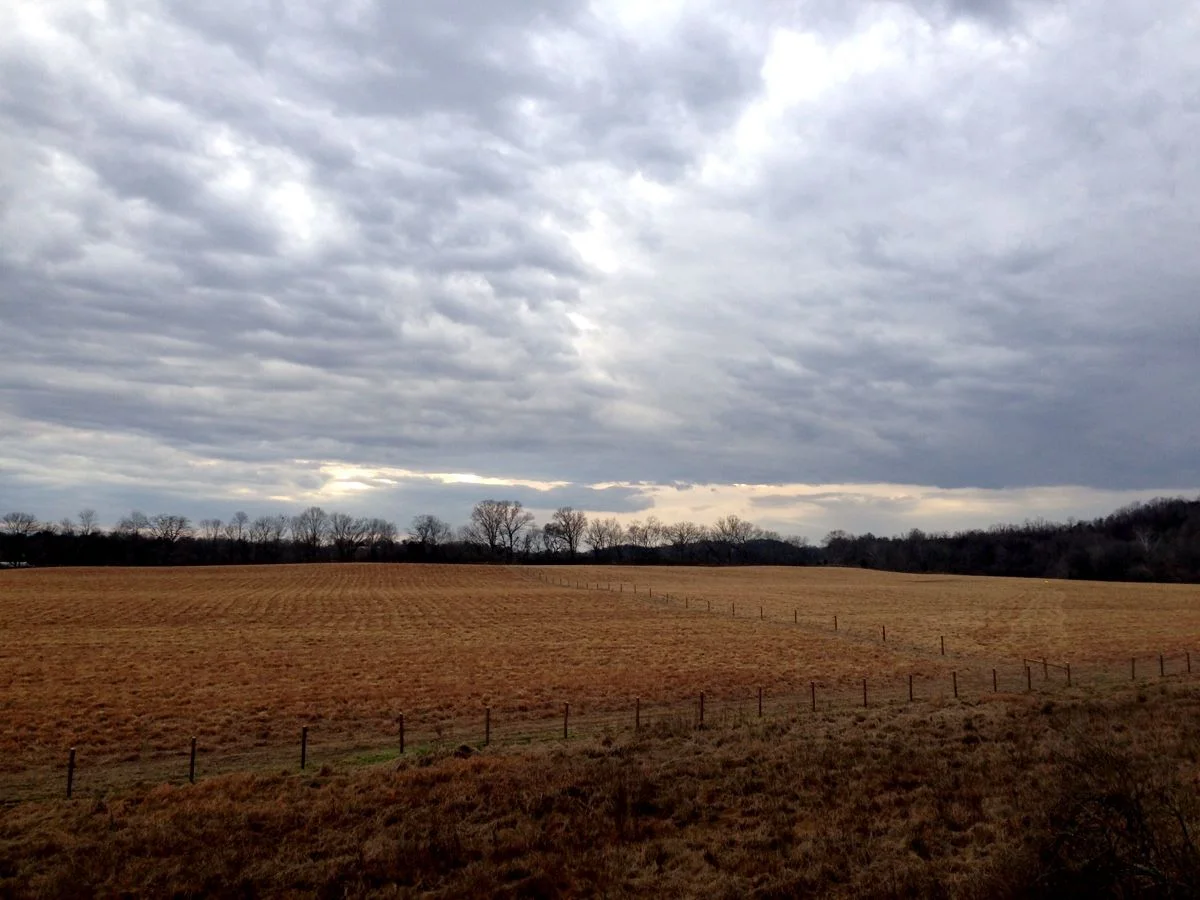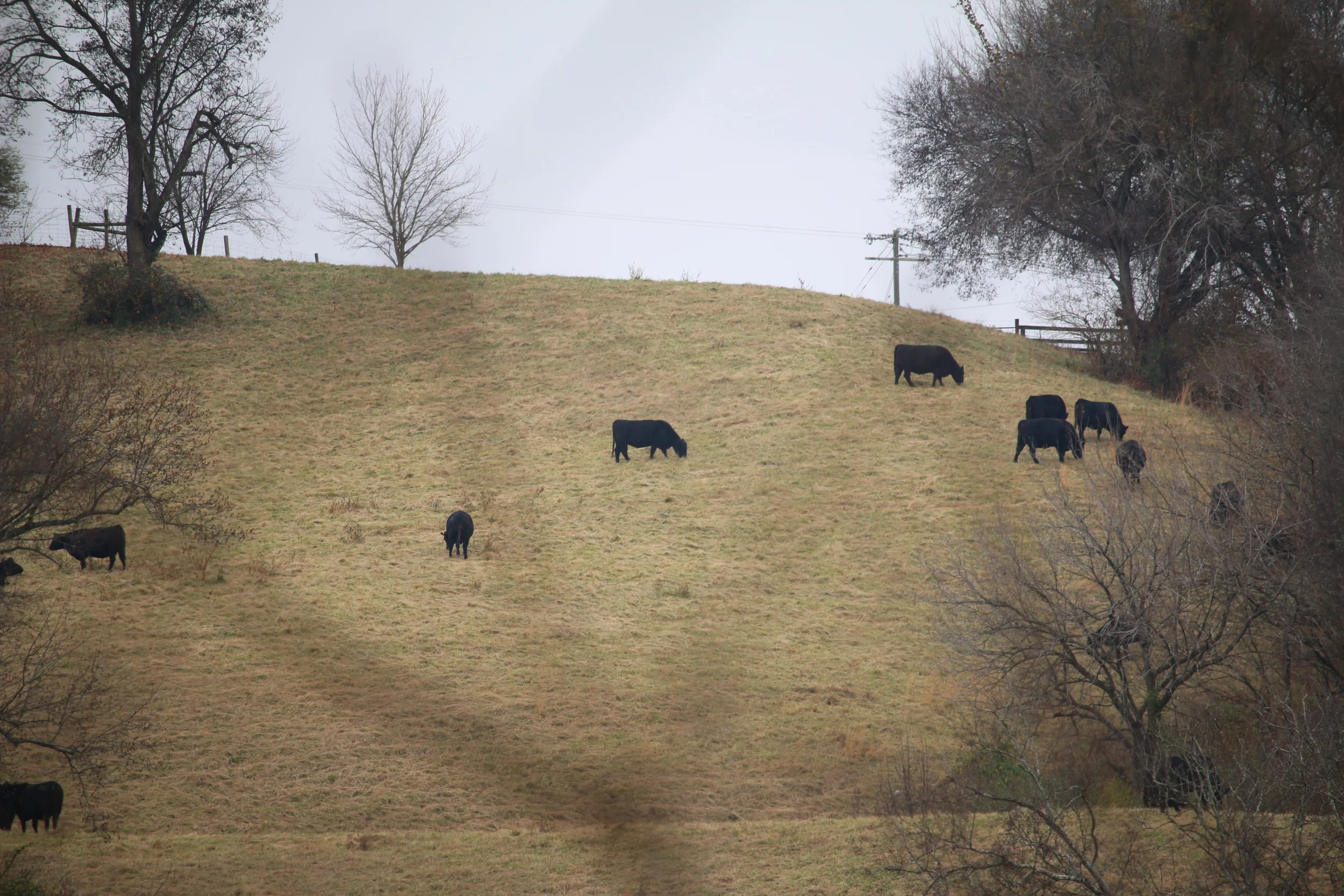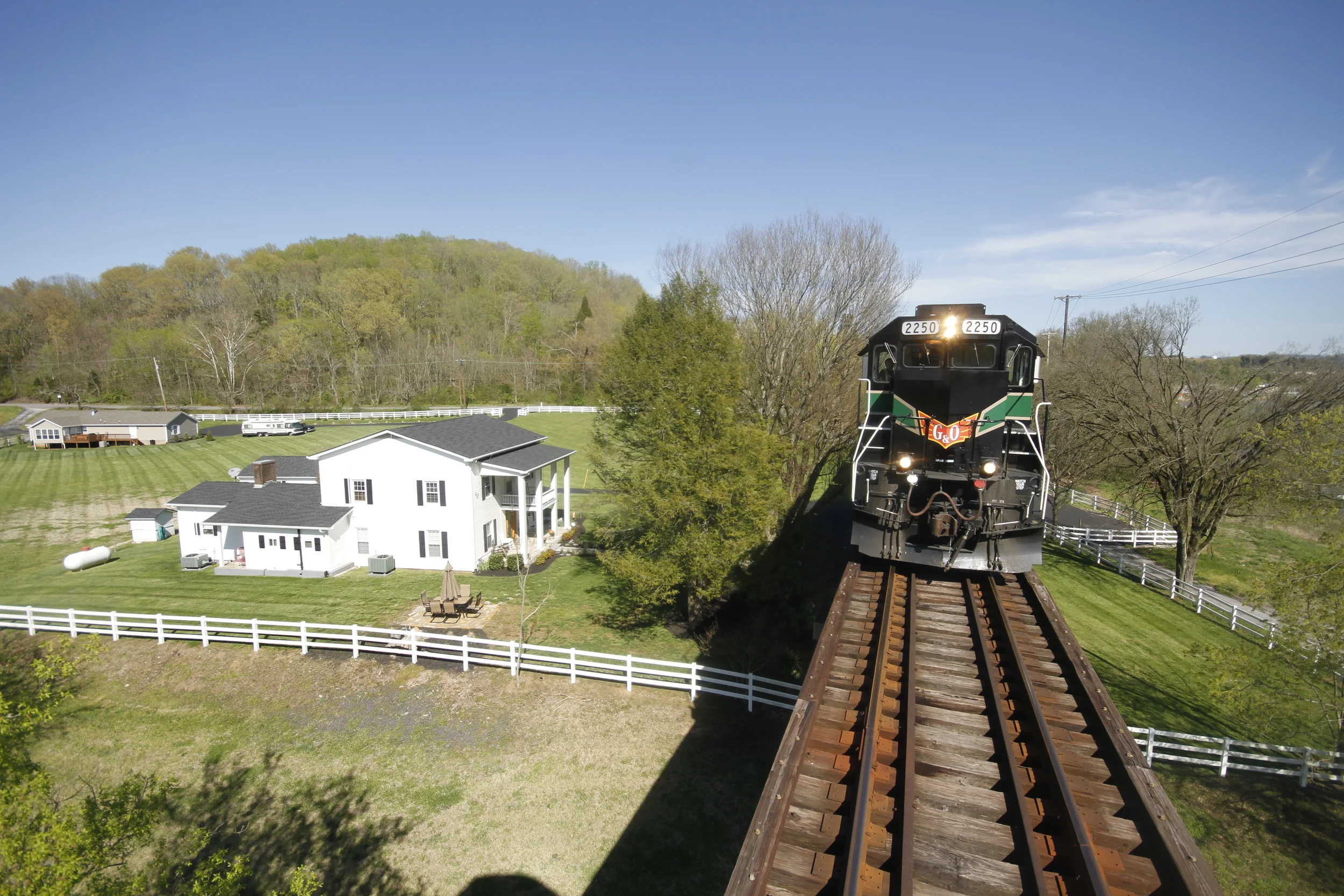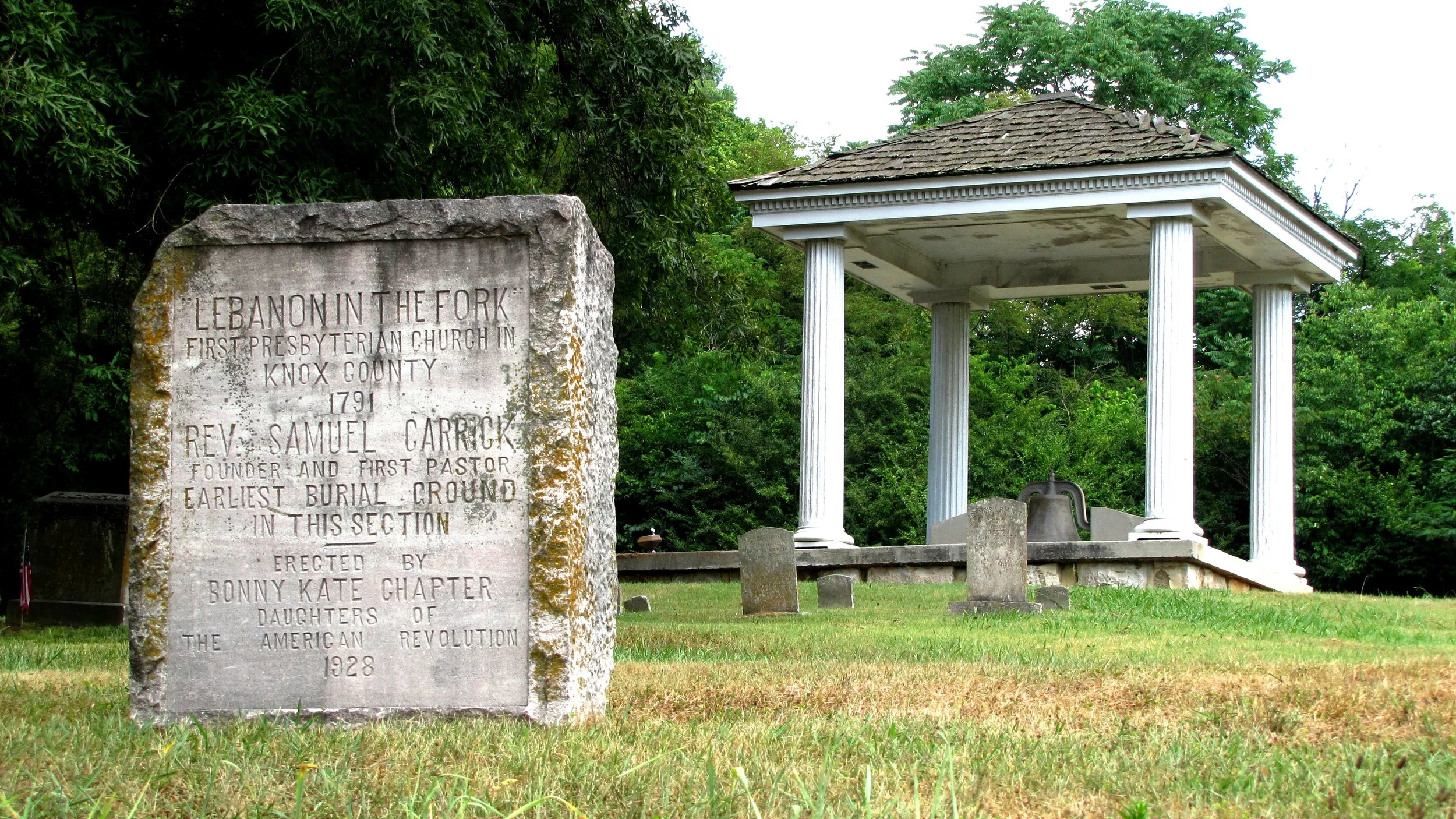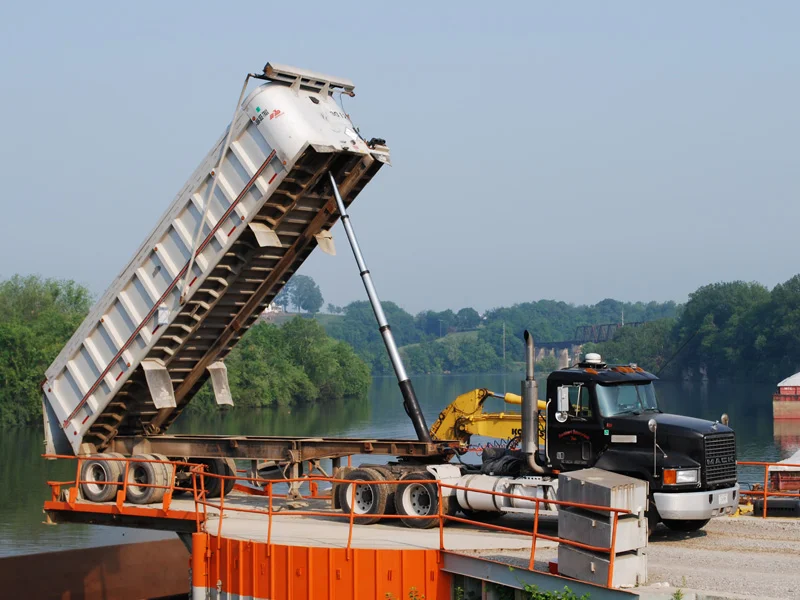3RR Virtual Trip Guide - Your Online Conductor
The Three Rivers Rambler route showcases a unique view of Knoxville. From industrial sites and local businesses to historic sites and scenic farmland, the Rambler offers a special view of this community. This guide shows the highlights of our route and covers a variety of locations. If you have any questions about a particular location please ask our passenger crew to learn more!
To view the 3RR trip guide in google earth on your phone or other device, click here.
Three Rivers Rambler Route
Click the image to enlarge. Image created in Google Earth.
1) Three Rivers Rambler Depot
The new Three Rivers Rambler depot is the start and end point of every 3RR trip. On the corner of Cumberland Avenue and University Commons Way, the depot is easily accessible from Neyland Drive, Alcoa Highway, and Kingston Pike. Constructed in 2015, the depot features indoor and outdoor seating, merchandise, snacks, drinks, restrooms, and is surrounded by plenty of free parking.
Next to the depot, close to Cumberland Avenue, is the John Henry display locomotive which is dedicated to the men that built the railroads. Learn more about the John Henry here.
2) University Commons
The University Commons (UC) is a new shopping center where the Three Rivers Rambler is based. Featuring retail stores, restaurants, and plenty of free parking, the UC is a popular destination.
University Commons is built upon the former site of Fulton Bellows, a metal workings and foundry operation, which started manufacturing in 1917. For almost 90 years the plant produced industrial bellows used in machinery, aircraft and medical equipment before closing in 2005.
Image credit: UT Sports
3) Sherri Parker Lee Stadium
In its continuing effort to enhance and upgrade facilities available to its women's athletics teams, the University of Tennessee officially opened the Sherri Parker Lee Softball Stadium on Feb. 5, 2008 (by defeating BYU 8-2 in the first annual Tennessee Classic!). The brand new venue also hosted a record 1,622 fans on April 12 for a high-profile exhibition against the U.S. Olympic Softball Team.
Image Credit: UT Sports
4) Regal Soccer Stadium
Built on the site of the Tennessee Soccer Complex, Regal Soccer Stadium is the brand new home of Lady Vols soccer.The new stadium, funded through private donations (including the bulk of money given by Knoxville-based Regal Entertainment Group) features stadium seating for approximately 3,000 fans and concessions stands on both the upper and lower levels.
5) KUB's Kuwahee Wastewater Treatment Plant
Although electricity was available in Knoxville as early as 1898, few people could afford it. Many families living around Knoxville still relied on kerosene lanterns and wood stoves until the late 1930s or early 1940s.
Knoxville's citizens voted in 1938 to form a public utility to bring affordable power to the community. The resulting Knoxville Electric Power and Water Board (renamed Knoxville Utilities Board in 1947) began providing electricity and water in 1939. It added gas service in 1945 and acquired wastewater service from the City of Knoxville in 1987.
Kuwahee is the largest of KUB’s four wastewater treatment plants and receives wastewater from industrial, commercial, institutional, residential, and hauled sources. The plant maintains operations around-the-clock by personnel certified by the State of Tennessee. Kuwahee is designed for an average daily flow of 44 million gallons and daily flows currently average 31 million gallons.
6) CSX Trestle
The first trestle we pass under belongs to CSX. This main line, which stretches from Detroit to Atlanta, passes through a small CSX yard located just behind the Sherri Parker Lee Stadium. It is common to see CSX switching in this yard from the University Commons area.
Pratt Pavilion houses two full-sized basketball courts and much more. Image credit: UT Sports
7) Pratt Pavilion
Directly connected to Thompson-Boling Arena, Pratt Pavilion features convenient, ground-level parking. The 70,000-square-foot structure boasts balconies at the south side of the building which overlook the practice courts.The west facade of the building is glassed from the first floor to the second floor, allowing visibility of gallery and display areas from the street. The building is a significant element to the picturesque south entrance to the University of Tennessee campus.
The facility is named after lead donor Larry Pratt, whose love for Tennessee athletics began at a young age, when his father, Floyd, brought him to various sporting events at Neyland Stadium, Alumni Gym and Stokely Athletics Center.
Thompson Boling Arena is home to the U.T. Men's and Women's basketball and Women's Volleyball teams. The arena is also used for concerts, conventions, and more. Image credit: UT Sports
8) Thompson-Boling Arena
Thompson-Boling Arena is home to the U.T. Men's and Women’s basketball and Women's Volleyball teams. The site is also used for other events such as concerts, conventions, and other sporting events such as NBA exhibition games. The arena is named after B. Ray Thompson and former U.T. president Dr. Edward J. Boling. The arena was first used during the 1987–88 season. With both the Vols and Lady Vols basketball consistently in the top 25, Thompson–Boling Arena has received great attention as a premier college basketball facility.
Home to the Tennessee Volunteers football team, Neyland Stadium can seat over 100,000 fans. Image credit: UT Sports
9) Neyland Stadium
Neyland Stadium is home to the University of Tennessee's football team-- the Tennessee Volunteers. The present day Neyland Stadium, Shields-Watkins Field, had its beginning in 1919. Col. W.S. Shields, president of Knoxville's City National Bank and a UT trustee, provided the initial capital to prepare and equip an athletic field. Thus, when the field was completed in March 1921, it was called Shields-Watkins Field in honor of the donor and his wife, Alice Watkins-Shields.
The stadium, apart from the field it grew to enclose, came to bear its own distinguished name, Neyland Stadium. It was named for the man most responsible for the growth and development of Tennessee's proud football tradition-- General Robert R. Neyland, who served as head coach from 1926-1952.
Before our depot was constructed, the boathouse was the start and end location for the Three Rivers Rambler. Image credit: UT Sports
10) Wayne G. Basler Boathouse
This three-story building is the permanent home of the University of Tennessee Rowing Team. The facility, located directly across the street from Neyland Stadium on the waterfront, anchors the west end of Knoxville's Volunteer Landing waterfront development and jettisons 40-feet out over the water with balconies overlooking the Tennessee River. The structure stands beside the "Vol Navy" docks.
The ground level boat bay holds 26 boats ranging from singles to pairs to quads and fours and – of course – eights. Between rows of neatly arranged equipment, the Tennessee River can be viewed through windows spanning the entire south wall. When the team is ready to get "hands on," telescoping arms extend from the boat racks, and a racing shell is removed from its holding place.
The boathouse was the former starting and end location of the Three Rivers Rambler before the the construction of the new depot.
11) Norfolk Southern Trestle
After passing the Boathouse, the Rambler passes underneath a trestle belonging to Norfolk Southern railroad (NS). These tracks traverse from the "City Yard" located in downtown Knoxville to Alcoa, TN.
12) Henley Street Bridge
In 2011, the Henley Street bridge (which links North and South Knoxville) was closed down for rehabilitation and upgrades. Over the next three years, the bridge was almost entirely dismantled and then rebuilt. With new lighting, better sidewalks, and bike lanes, the bridge is an unmistakable icon in the Knoxville city skyline.
Image Credit: Calhoun's
13) Calhoun's on the River
A Rambler crew favorite, Calhoun's restaurant opened in June of 1988 on Knoxville's historic waterfront. Calhoun's is one of a few restaurants in Knoxville that is accessible by boat; it has its own dock for mooring vessels. Features include an outside deck as well as an enclosed deck with a panoramic view of the Tennessee River.
14) Gay Street Bridge
The Gay Street Bridge was constructed in 1898 and is the oldest of the four vehicle bridges that connect Downtown Knoxville with South Knoxville. Originally equipped with trolley tracks, the bridge accelerated the growth of the "Island Home Park" on the south side of the Tennessee river, which was previously isolated from downtown Knoxville.
Image credit: Tennessee Riverboat Company
15) Tennessee Riverboat Company
Experience the Star of Knoxville! This authentic paddlewheeler is fully enclosed, air conditioned, and heated for year round comfort. The vessel is equipped with two (2) bars, a dance floor, band stage, and is exquisitely decorated for the most elegant dinner and entertainment available. From black tie events like weddings and receptions to a casual event like a football charter the atmosphere is right for any occasion.
To learn more about the Tennessee Riverboat Company click here.
16) Volunteer Landing Marinas
Volunteer Landing Marina is situated at the headwaters of the Tennessee River- mile marker 648 in Downtown Knoxville. The Marina is home to the Vol Navy Boaters Association and the Volunteer Princess dinner cruise line. Just minutes from The University of Tennessee campus, Downtown Market Square, Gay Street and The Old City Knoxville, the marina features a three mile river walk.
17) 3RR Steam Shed
The 3RR "Lindy" house was built to house steam engines. Features of the Lindy House include a water tower used to refill the tender between trips.
18) American Pipe & Supply
American Pipe & Supply provides products to the industrial, mechanical, and plumbing contractors, industrial-manufacturing plants, underground utility contractors, and fire protection contractors.
19) Governor Ned McWherter/Riverside Landing Park
Governor Ned McWherter/Riverside Landing Park is a favorite for water access to the Tennessee River and is located below James White Parkway. The James White Greenway connects the park to Morningside Park and Volunteer Landing and is open daily from dawn to dusk.
20) Former General Shale Brick Production Plant
Shutdown during the 10-15 year low housing slump, the General Shale brick production plant was closed in 2007. General Shale now has a distribution and showroom location in West Knoxville; the property is now used as a storage facility for KUB.
21) KUB Mark B. Whitaker Water Treatment Plant
The Mark B. Whitaker Water Treatment Plant is named after a former KUB General Manager and was built in 1927 at a cost of about $1 million. The plant, which treats approximately 34 million gallons of water on average each day, provides water to more than 76,000 customers in Knoxville, East Knox County, and portions of Jefferson and Sevier counties. The source water is drawn from the Tennessee River, which provides plentiful and high-quality surface water for KUB customers. Only about 0.1 percent of the water flowing past the plant's intake is withdrawn.
22) Island Home Park
Across the river you will see Island Home Park, a small park located in one of Knoxville's oldest neighborhoods (Island Home). The Island Home Park features a playground, tennis courts, a canoe launch, and a scenic view of the Tennessee River. It also happens to be an awesome place to watch the Rambler pass by.
23) Downtown Island Airport (DKX)
Also across the river, next to Island Home Park, is the Downtown Island Airport (DKX), which is a fixed based operator (FBO) that is owned and operated by the Metropolitan Knoxville Airport Authority (MKAA). The airport was opened in 1930 by Tom Kesterson, who was TVA's first chief pilot. The 3,500-foot runway is located 3 miles from downtown Knoxville and the UT campus. The FBO is open for operation from 7 a.m. until 10 p.m. daily.
24) McNutt Farm
The large farm we pass by is McNutt Farm. George McNutt fought in the Revolutionary War and received 1,600 acres as payment. Much of his land was located downtown, and many of the early deeds to the city of Knoxville have George McNutt's signature on them.
One of George McNutt's direct descendants was a lady named Mrs. Elizabeth Henry who grew up in this area and provided much of the historical information presented here. She was a regular rider onboard the 3RR and at one point even sold her honey on the train.
25) UT Agricultural Campus Farmland
Next to McNutt farm is farmland that belongs to the University of Tennessee's Agricultural campus. The cattle often seen grazing on this farmland are part of a warm season grasses study.
A special view from the Three Rivers Rambler.
26) Formation of the Tennessee River
Under the breathtaking Three Rivers Trestle, the French Broad and Holston Rivers' confluence forms the Tennessee River. The French Broad River flows 218 miles from Transylvania County, North Carolina and the Holston River flows 136 miles from Kingsport, Tennessee.
The Tennessee River is the largest tributary of the Ohio River. At 652 miles long, the river flows from Knoxville towards Chattanooga and then crosses into northern Alabama. The river then creates the upper-most border between Alabama and Mississippi before returning to Tennessee. Once in Tennessee, the river defines the boundaries between "Middle" and "West" Tennessee. The final part of the river's run is in Kentucky, where it flows into the Ohio River at Paducah Kentucky.
A view of the Three Rivers Trestle from the Will Skelton Greenway in the Forks of the River Wildlife Management Area.
27) Forks of the River Wildlife Management Area
As seen on the opposite side of the rivers, the Forks of the River Wildlife Management area is a 331 acre area that features an urban wilderness trail and is adjacent to the Ijams Nature Center. The Forks of the River Wildlife Management Area is owned by the Tennessee Wildlife Resources Agency and is located within City of Knoxville limits. A portion of the City of Knoxville's 3.5-mile Will Skelton Greenway runs through the Forks of the River Wildlife Management Area.
Learn more about the Forks of the River Wildlife Management Area here.
28) Gilliam's Station
Near the end of the Three Rivers Trestle is a large white house known as Gilliam's station. Devereaux Gilliam was one of Knoxville's earliest settlers and built a house at the Forks of the River in 1786.
Image credit: Brian Stansberry
29) Lebanon-in-the-Fork Cemetery
The Lebanon-in-the-Fork cemetery, just northeast of the trestle, is the site of the first church in Knox County. The Lebanon-in-the-Fork Presbyterian Church was founded by Rev. Samuel Carrick who went on to start a private school that eventually became the University of Tennessee. Samuel Carrick's wife, Elizabeth, was buried in the cemetery in 1793; her grave is the oldest market grave in Knox County. A Presbyterian church was maintained at this location until 1980, when it burned down due to arson. The bell and four columns are all that remain.
Image credit: Burkhart Enterprises
30) Burkhart Enterprises
The industrial area southeast of the trestle is Burkhart Enterprises, a materials handling business that distributes commodities by barge, truck, and rail. Burkhart Enterprises is a customer of the KXHR railroad. Once known as Burkhart's Wharf, the present day docks are also where Knoxville's first steamboat, the Atlas, landed in 1828.

